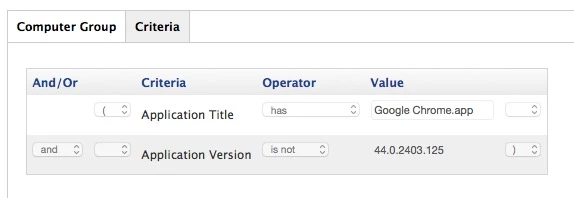Hi All,
I am just wondering how do you guys update Chrome for all your macs? Do you uninstall it and redeploy from JSS? I am asking this because my macs in my environment has outdated Chrome and I need to update them, but unsure how I can achieve this.
Anyone can provide some steps on how it can be done?
Sorry for asking newbie questions as I am not sure if I can do app updates in Casper.
Thanks in advance.






